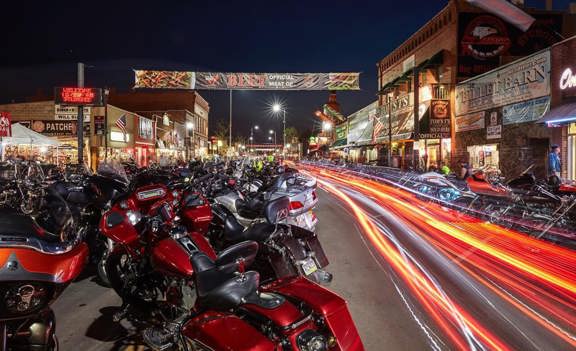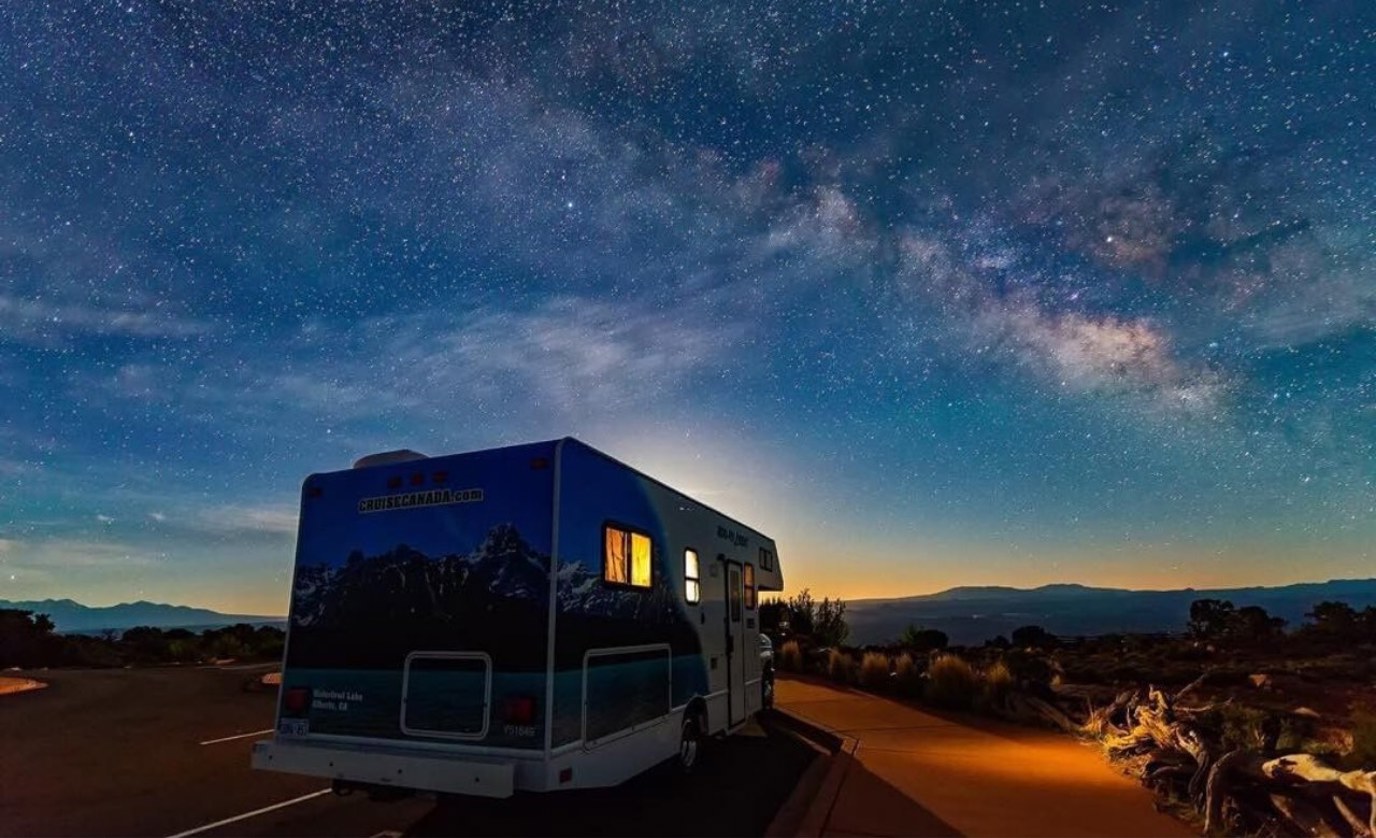
7 Most Common RV Electrical Problems
SharePhoto Credit: Instagram User @lightpainter33
When you’re out on the road, nothing should stop you from having the adventure of a lifetime! Nonetheless, issues like common RV electrical problems can arise.
Even if you’ve rented RVs for years, knowing how to properly troubleshoot certain electrical problems can be confusing.
Your first step is gaining a general understanding of the electrical systems that power your RV. Not only will this help you on the road, but this knowledge aids you in inspecting your RV before departing.
Whether you’re doing pre-trip research or need an answer to your current problem, Cruise America is ready to help!
Keep reading to learn about the power systems in all our motorhomes, common RV electrical problems, and helpful troubleshooting tips.
Troubleshooting RV Electrical Problems: Knowing Where to Start
Before we jump in, let’s cover something important to remember when dealing with RV electrical problems.
If, at any time, you do not feel sure or confident that you know what you’re doing with your RV’s system, don’t do it! It is much safer to wait until you have all the information or help you need.
Plus, there are some issues that we’ll cover below that you shouldn’t try to fix on your own.
What’s Powering My RV?
All of Cruise America’s motorhomes come equipped with two separate electrical systems. Your motorhome has a 12-volt DC system (direct current from a battery source), and a 120-volt AC system (alternating current from a power outlet or generator).
Additionally, your motorhome may have a generator. However, not all Cruise motorhomes come equipped with one.
Using a power converter, your RV transforms 120-volt AC power into 12-volt DC power when the RV is plugged in.
Through this convert, 12-volt DC power is supplied to interior lights, fans, and your water pump. The 120-volt AC provides household power to the RV’s wall outlets, roof AC unit and microwave.
The 12-Volt System: Battery Locations & Charging Methods
Your motorhome will have two 12-volt batteries. One battery is located in the engine compartment while the other is in the coach.
The battery located in the coach is called the auxiliary battery. The engine-compartment battery is charged while driving the RV, while the coach battery can be charged in two ways.
First, it can be charged from the vehicle alternator while the engine is running. This is the most efficient charging method and takes around 30 minutes.
Second, you can charge the coach battery from the 12-volt system through the power converter, which takes 6-8 hours.
The 120-Volt System: How to Use It
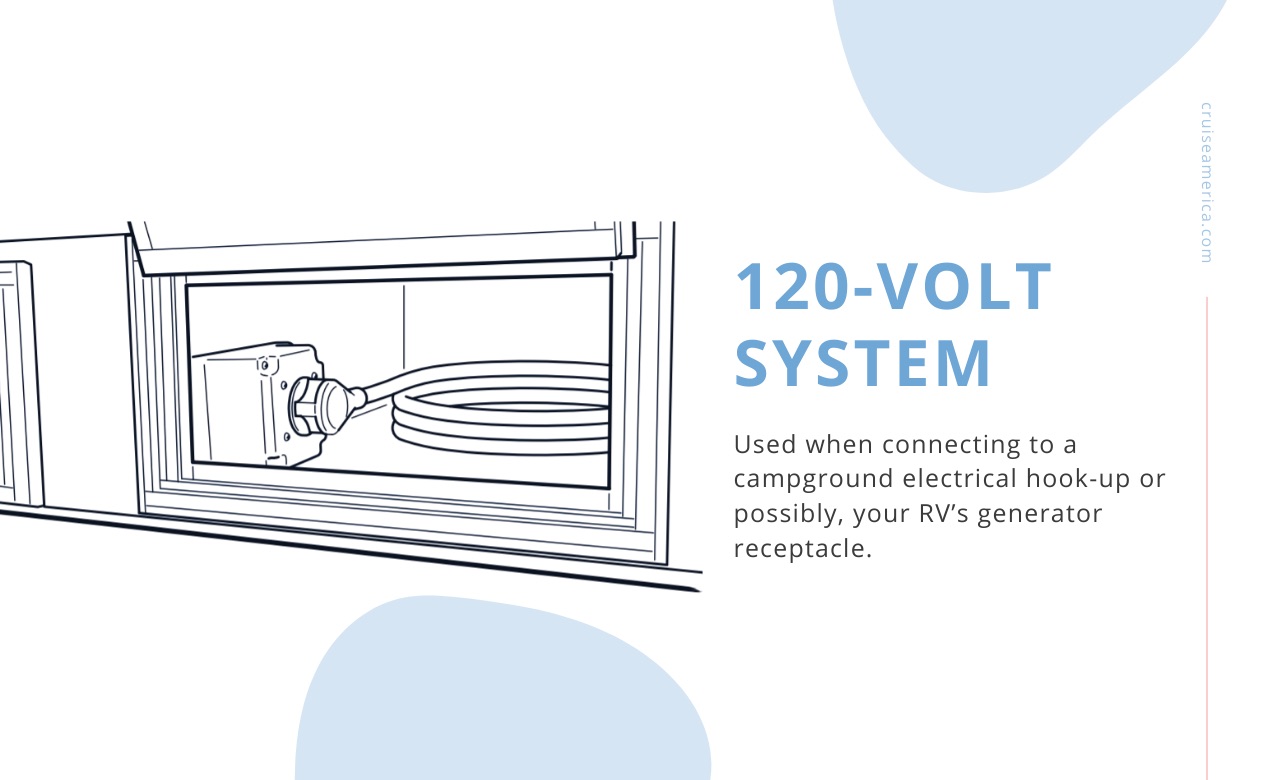
You use your 120-volt system when connecting to a campground electrical hookup or possibly your RV’s generator receptacle.
With your RV adequately connected, you can run your roof AC, microwave, and supply power to your RV’s electrical outlets.
When you plug your RV into an external 120-volt power supply, one thing to check is the power supply’s breaker. So, if you’re plugging into a campground hookup, you can make sure its breaker is on. If the breaker isn’t on, your 120-system won’t work properly.
The outlets in your RV are protected by a GFCI or Ground Fault Circuit Interrupter. These outlets look similar to normal outlets except for the two buttons in the GFCI outlet’s center. If the outlet stops working, press the RESET button in the center.
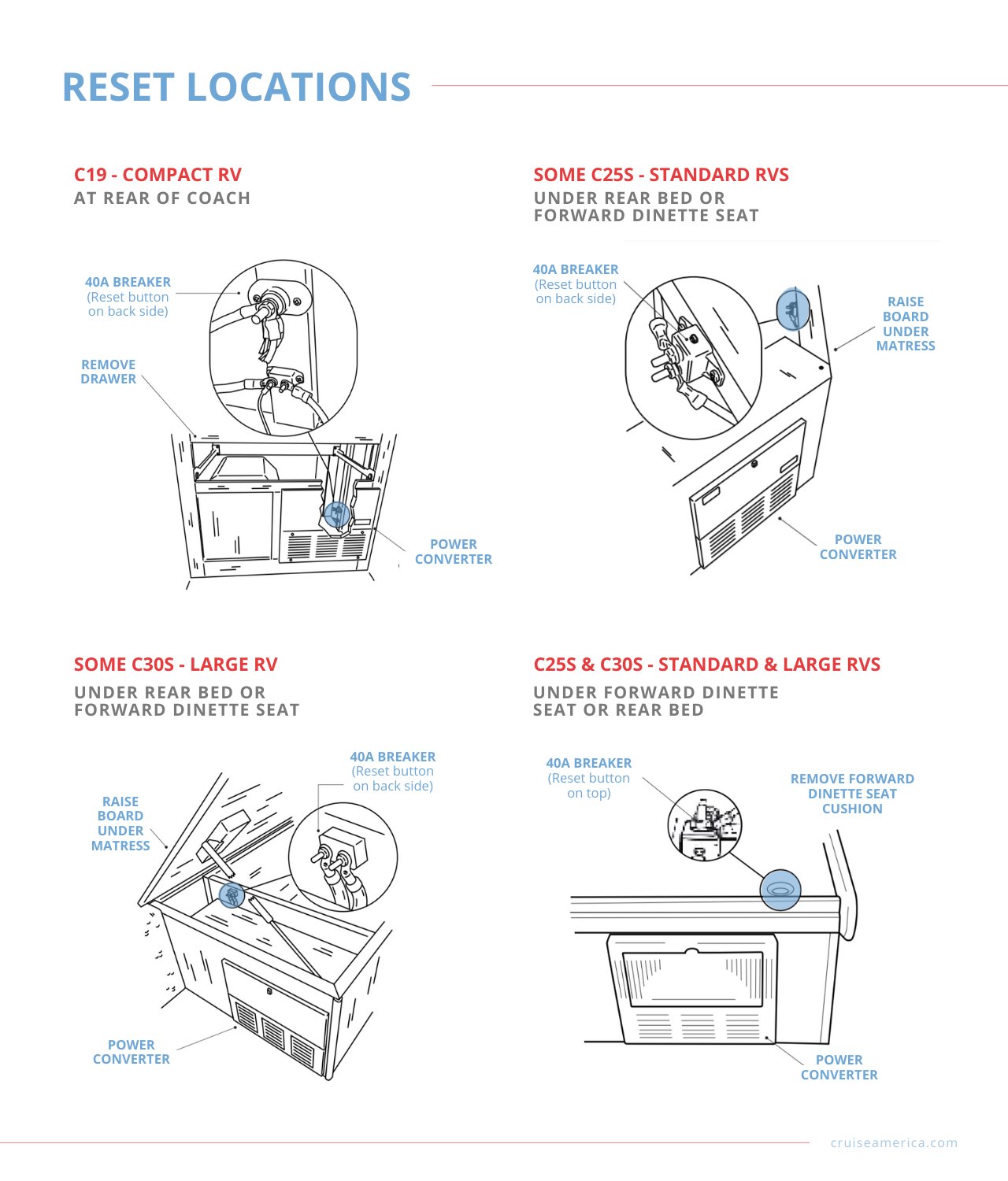
You deserve an amazing vacation and RV rental experience!
So, rent your dream RV from Cruise America today and explore all the amazing sights nature has to offer.
7 Common RV Electrical Problems: Causes & Solutions
Now that we’ve covered basic information regarding an RV’s power systems, let’s go over common RV electrical problems. We’ll explain the initial issue and any issues related to it, the potential cause, and solutions you can try.
If your issue isn’t listed below, there are plenty of resources available at Cruise America’s website! Check out our Renter’s Resources page for helpful information about your RV rental.
Issues With RV Microwave Oven & Refrigerator
Issue #1: Oven is not working and has no display.
Cause: This issue is potentially caused by a lack of power going to your microwave oven. Normally, the microwave oven can be used when connected to a 120-volt power supply.
Solution(s):
-
Check to see if your roof AC is working. Both the AC and microwave run on the same power supply, so if the AC works, your oven should too.
-
If the AC is working, your next step is to check the breakers to your power converter. If they’re not switched on, that might be why your oven isn’t working.
-
If the AC is not working, check to see if your 120-volt power is working with your coach battery.
-
This last solution may seem silly, but it works! Make sure your oven is fully plugged in; an unplugged oven won’t turn on!
Issue #2: Oven display is lit, but the oven doesn’t heat food.
Cause: The potential reason for this issue is a broken oven.
Solution(s):
-
This is an issue you shouldn’t try to fix on your own!
-
If you think your oven is broken, call Traveler’s Assistance at their non-emergency number, 1-800-334-4110.
Issue #3: The refrigerator is not working on 120-volt.
Cause: There may be something you need to check with your 120-volt power system or the refrigerator itself.
Solution(s):
-
First, check that the ON button for the refrigerator is in the IN position.
-
The AUTO/MANUAL button must be in the IN position.
-
Check to see if your microwave’s display is on. If so, the oven is properly receiving power.
-
If the oven’s display is on, that means your 120-volt system is working. So, your next step is to check your converter for the breaker to troubleshoot the refrigerator.
Issues With RV Roof Air Conditioning Unit
Issue #1: AC doesn’t run.
Cause: 120-volt power isn’t getting to your roof AC unit.
Solution(s):
-
Check to see if your microwave is working, as the AC and microwave both use the same power supply.
-
If the microwave is working, check the breaker in the converter to troubleshoot your AC.
-
If the microwave isn’t working either, you need to troubleshoot your 120-volt system to ensure it’s working.
Issue #2: AC and microwave work but no power to RV outlets
Cause: There are two potential causes for this issue—either your GFCI has been tripped, or your converter breakers have been tripped, preventing you from using your outlets.
Solution:
-
First, check your GFCI outlets in the kitchen or bathroom. You can reset these by hitting the RESET button in the middle of the outlet.
-
If this doesn’t work, check your converter for the breaker to reset any necessary breakers.
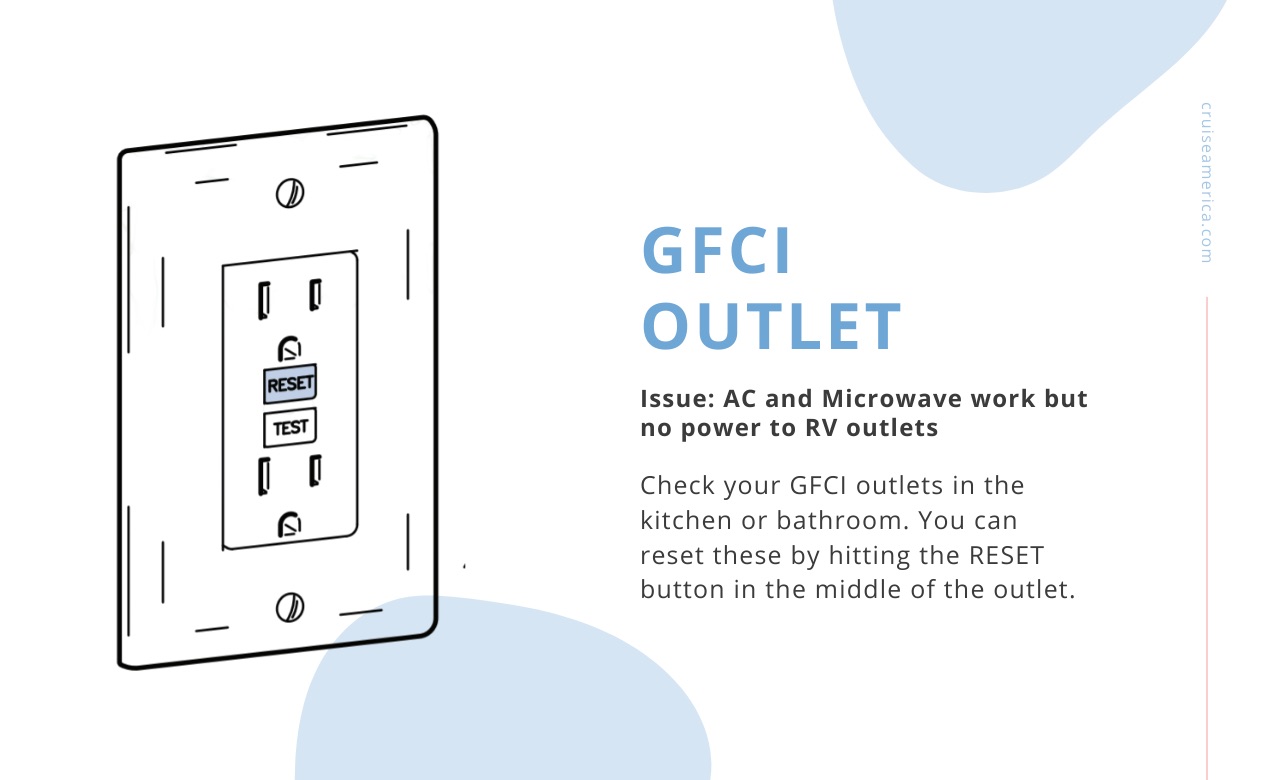
Other RV Electrical Problems
Issue #1: RV is plugged into an external power supply, but has no 120-volt power in the RV coach.
Cause: This can be caused when the breakers for your external power supply (i.e., a campground’s hookup) or your converter are off.
Solution:
-
When hooking up to an external power supply, make sure the breakers are turned on. If they aren’t, you won’t get any power.
-
If the external power supply is functioning, check your converter’s breakers. If necessary, reset these breakers to see if this fixes your issue.
Issue #2: Rotten-egg smell
Cause: While this is not a common problem, it is a serious one to know about. The source of this smell can be your coach battery. If the battery is shorted or is overcharged, it will emit sulfur fumes, resulting in this smell.
Solution:
-
If you smell a rotten-egg odor and believe it is your coach battery, do not try to fix it yourself!
-
Contact Traveler’s Assistance at their non-emergency number, 1-800-334-4110, and schedule a repair.
-
While you wait, open all windows to air out your RV.





